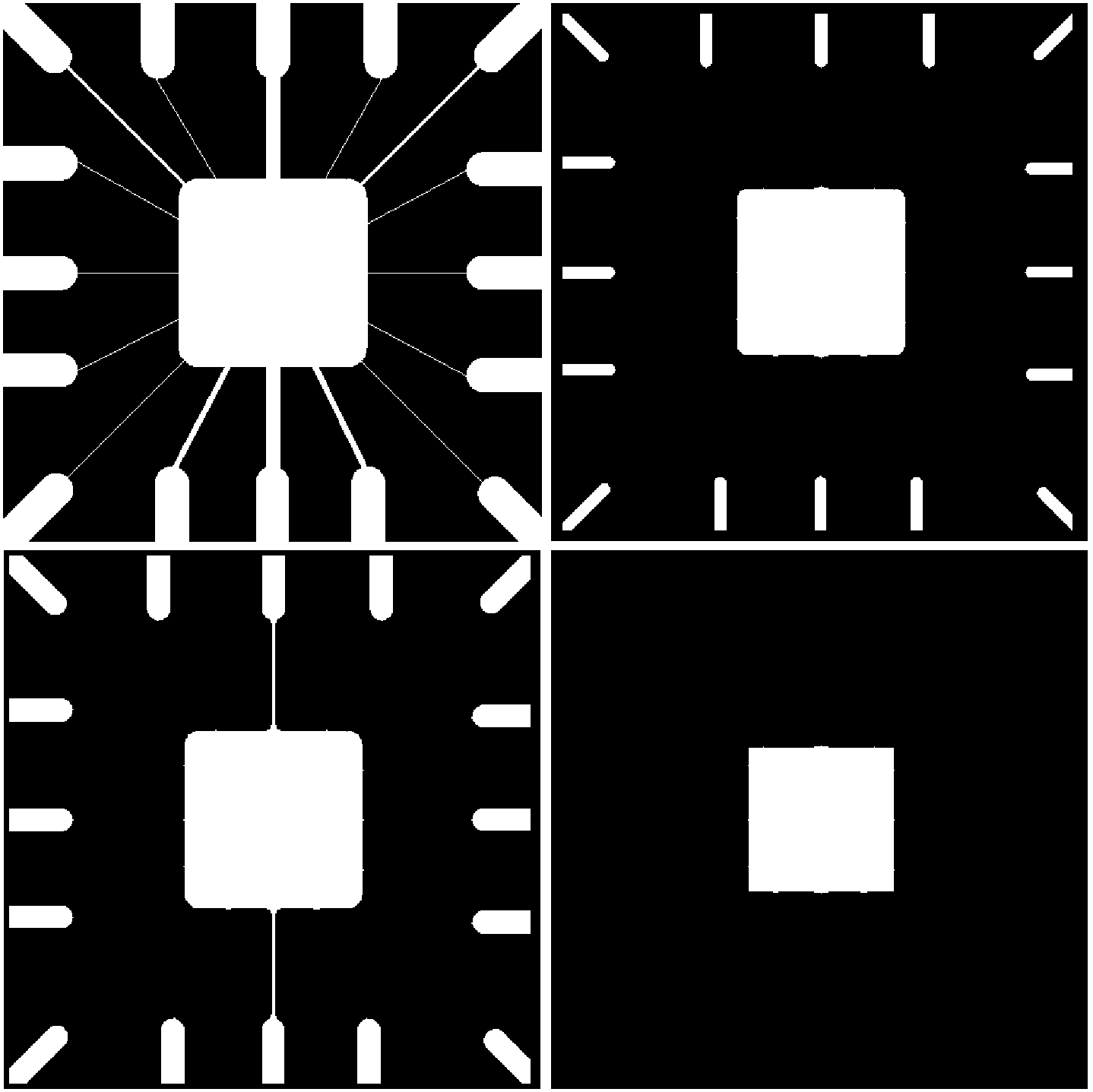imerode
J = imerode(I::Union{GMTimage{<:UInt8, 2}, GMTimage{<:Bool, 2}}; hsize=3, vsize=3, sel=nothing)::GMTimageErode the grayscale or binary image I.
The erosion is performed with a matrix of 0’s and 1’s with width hsize and height vsize, or, if possible, with the structuring element strel. Later case is faster but it is only available for binary images, where by binary images we mean Boolean images or images with only 0’s and 1’s of UInt8 type.
Args
I::Union{GMTimage{<:UInt8, 2}, GMTimage{<:Bool, 2}}: Input image.
Kwargs
hsize::Int=3: Horizontal size of the 'box' structuring element.
vsize::Int=3: Vertical size of the 'box' structuring element.
sel=nothing: Structuring element (See strel function). An alternative tohsizeandvsizeoptions. If equal tonothing, a structuring box of sizehsizexvsizeis used.
Returns
A new GMTimage of the same type as I with the erosion applied.
Examples
Erosion with a disk radius of 10, 5 and 20
using GMT
I = gmtread(TESTSDIR * "assets/chip.png");
J1 = imerode(I, sel=strel("disk", 10));
J2 = imerode(I, sel=strel("disk", 5));
J3 = imerode(I, sel=strel("disk", 20));
grdimage(I, figsize=6)
grdimage!(J1, figsize=6, xshift=6.1)
grdimage!(J2, figsize=6, xshift=-6.1, yshift=-6.1)
grdimage!(J3, figsize=6, xshift=6.1, show=true)See Also
imdilate, imopen, imclose, strel
These docs were autogenerated using GMT: v1.33.1
